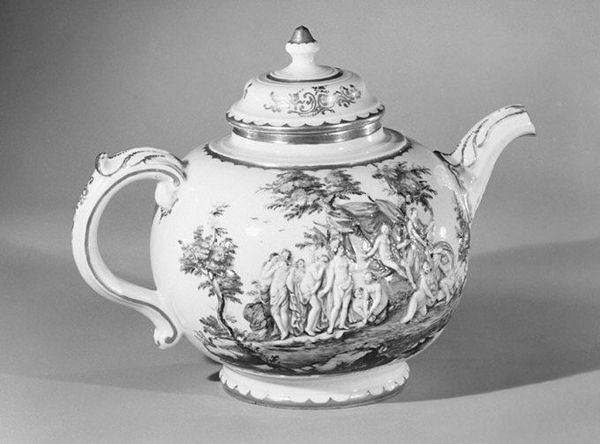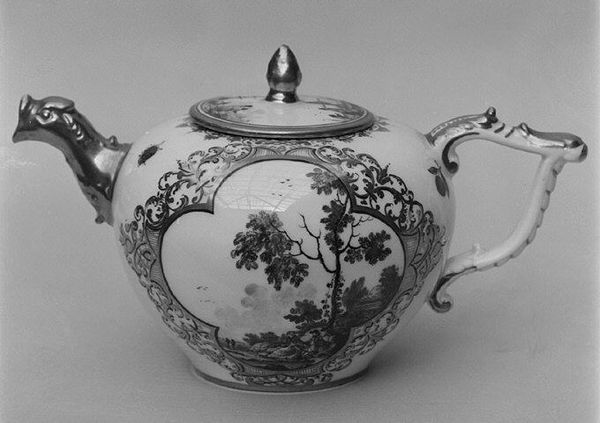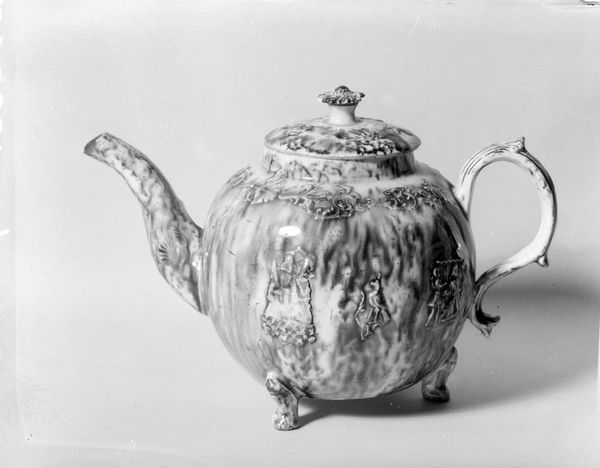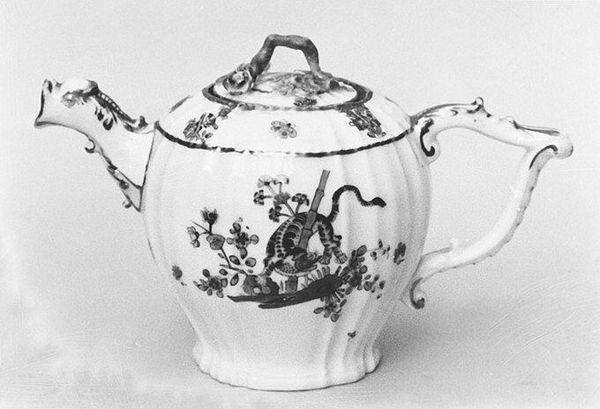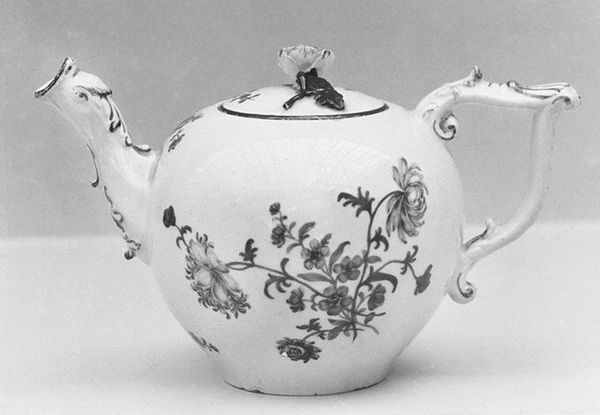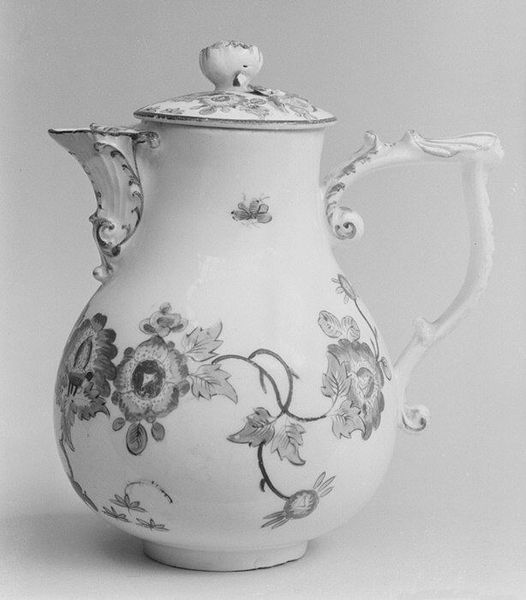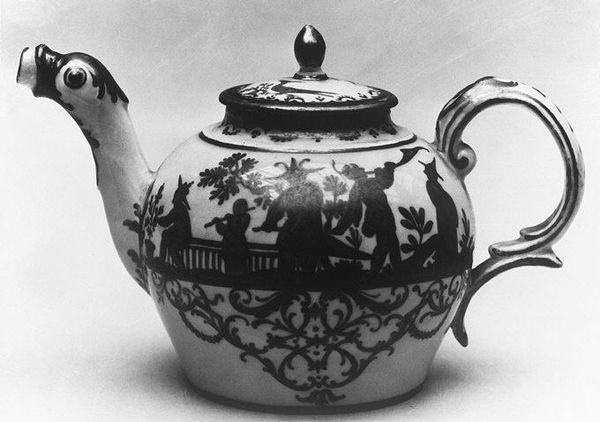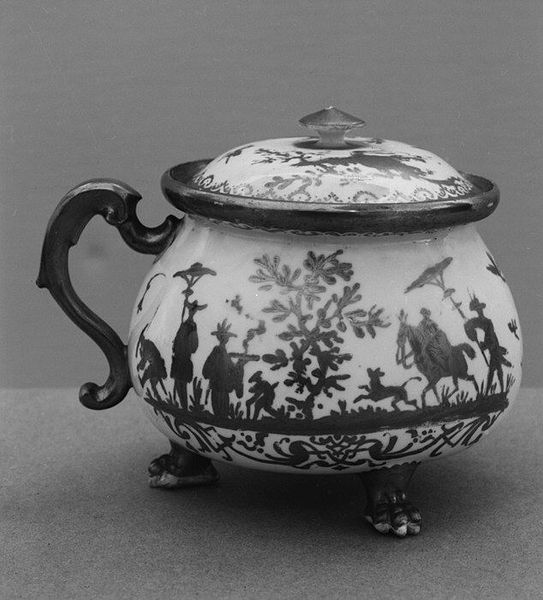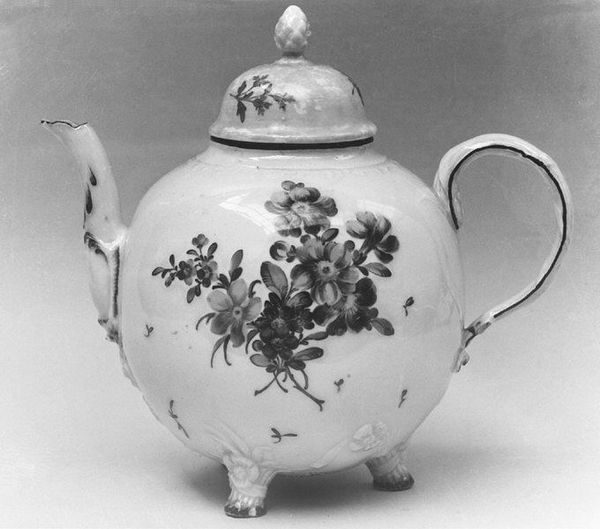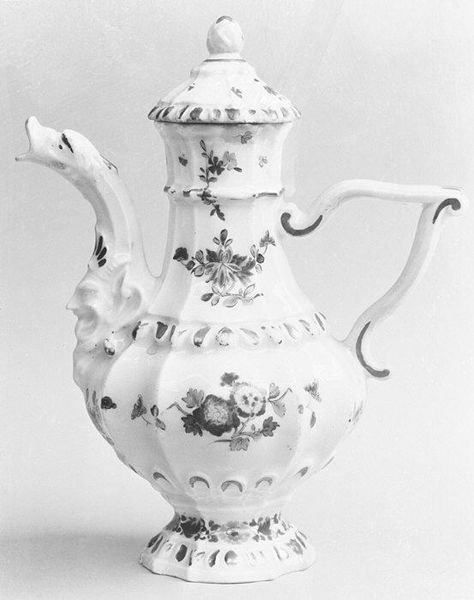
ceramic, porcelain, sculpture
#
3d sculpting
#
human-figures
#
ceramic
#
jewelry design
#
porcelain
#
culinary art
#
black and white theme
#
appetizing
#
food illustration
#
stoneware
#
sculpture
#
black and white
#
human
#
macro photography
#
food photography
#
decorative-art
Dimensions: 4 1/2 × 6 1/2 in. (11.4 × 16.5 cm)
Copyright: Public Domain
Editor: So this piece is a porcelain teapot made around 1720 to 1730 by the Meissen Manufactory. It's currently at the Metropolitan Museum of Art. The delicate, almost miniature depictions of what appear to be East Asian figures and motifs seem to be contained by these wispy floral designs that frame the entire teapot. What can you tell me about this blend of East and West, and the kind of social statement this piece is making? Curator: That’s a great observation. Porcelain teapots like this were hugely popular among the European elite during the 18th century, embodying the fashionable trend of *chinoiserie*. What we see here isn't necessarily a direct or accurate representation of East Asian culture, but rather a European interpretation and reimagining of it. It reflects the societal fascination with the exotic, a taste carefully curated and consumed by the aristocracy. Editor: So it's less about genuine cultural exchange and more about… projecting an image? Curator: Exactly. The imagery is politically charged. Owning such an object wasn't just about appreciating art; it was a statement of wealth, global awareness, and sophisticated taste. Porcelain itself was a valuable commodity, and pieces like this displayed the owner's access to global trade networks and luxury goods, bought sometimes at the cost of human lives in faraway continents. The consumption of tea became embedded within these complex economic and social exchanges, right? Editor: That makes a lot of sense. I didn't initially consider the economics tied to such decorative objects. The social status this object represented... Curator: Indeed. Art, especially decorative arts, were seldom divorced from these power dynamics and were often employed in active political branding. Understanding the historical context allows us to interpret the object not just as a beautiful piece of craftsmanship but as a symbol of a specific social hierarchy. Has looking at it this way reshaped how you see the work? Editor: Absolutely. It is no longer *just* a teapot, but a vessel of social significance.
Comments
No comments
Be the first to comment and join the conversation on the ultimate creative platform.
